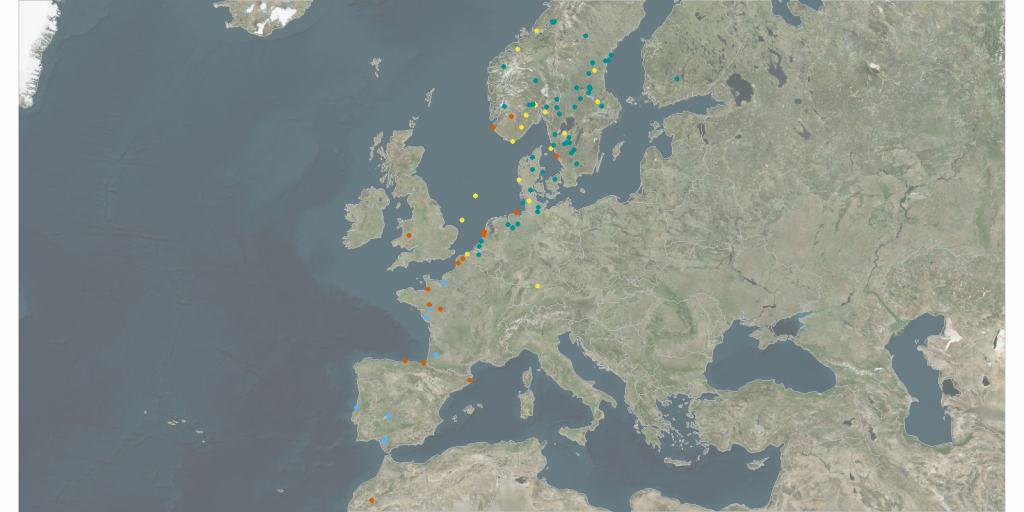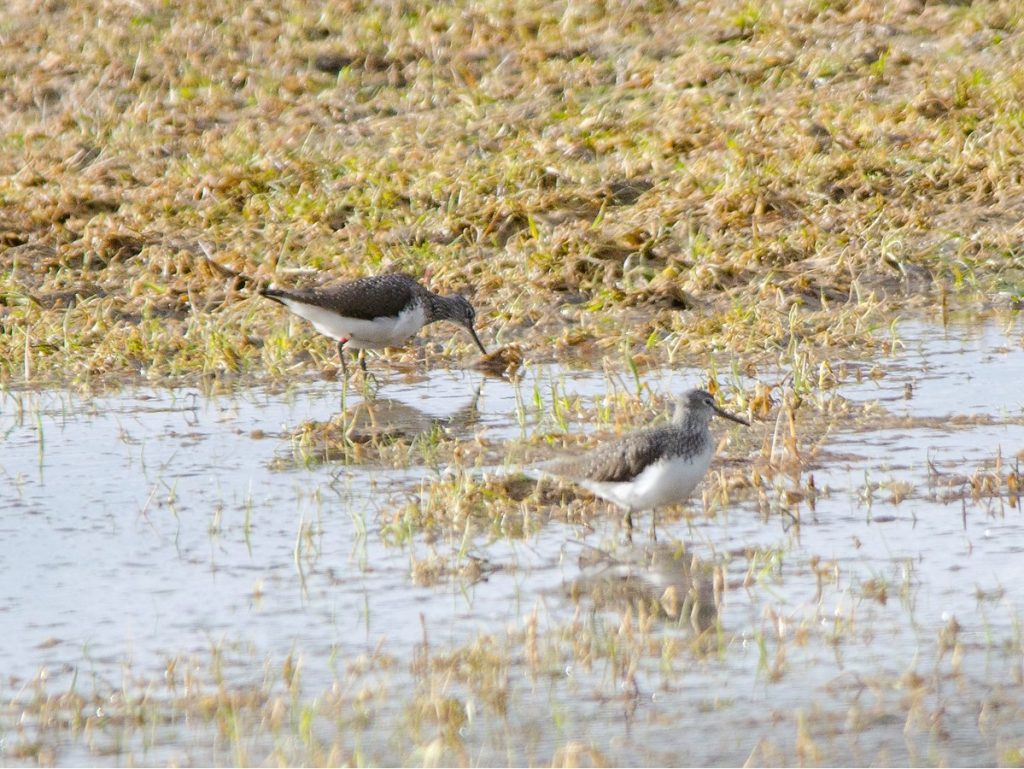Ringing and results
A traveller returns
Sarah Harris recounts the story of one of our Green Sandpipers and where it goes in Summer.
Since 1909, the British Trust for Ornithology bird ringing scheme has ringed just over 2,600 Green Sandpipers in Britain and Ireland. At Rye Meads, the ringing group has contributed 90 to that total. Over the years, six foreign-ringed birds (all different individuals) have been found in Britain and Ireland and there are 433 records (not necessarily 433 different individuals) of BTO-ringed birds being reported overseas. Below is a map showing what the foreign locations of birds ringed or recovered in Britain and Ireland looks like:

Foreign location of birds ringed or recovered in Britain & Ireland.
Encountered here in: Winter (Nov-Feb); Spring (Mar-Apr); Summer (May-Jul); Autumn (Aug-Oct)
Credit: BTO – Robinson, R.A., Leech, D.I. & Clark, J.A. (2022) The Online Demography Report: Bird ringing and nest recording in Britain & Ireland in 2021. BTO, Thetford (http://www.bto.org/ringing-report, created on 30-August-2022)
Often, the first you know of a Green Sandpiper in the vicinity is their thin, repeated whistle and fleeting glimpse as the bird shoots off into the distance or around a corner! The majority of birds breed further north than the UK, heading to Scandinavia to raise their young with just a couple of birds stopping short and nesting in Scotland each year. They spend relatively little time at their home in the north, arriving in late April, and the females are back with us by around 15th June, because they leave the male to raise the young. This is because they build the eggs on supplies gathered on the wintering grounds and lay the four huge eggs (relative to the size of the female), which presumably leaves her in need of a well-earned break, not chick-rearing responsibilities! In winter, they’ll be found further south, as far as Africa, but with just under 300 individuals spending the winter in Britain and Ireland (BirdAtlas, 2008–11). The longevity record for Green Sandpiper is 9 years, 11 months and 18 days, set in 1998 (BTO Ringing Report, 2022).
Well, we have our very own well-travelled friend – fondly known as, err…. white over red / yellow over metal to reflect its colour-ringing combination – and it has been spotted and photographed. This bird was ringed by the Rye Meads Ringing Group in October 2013 as an adult, so will be at least 11 years old in May/June 2023 – which would be a new BTO longevity record! …except that the BTO longevity records are measured from the ringing date to the resighting date. So our little friend will need to show off its bird ring combinations to anyone who will look for two more years to make it onto the BTO longevity wall of fame (or online Ringing Report webpage of fame – doesn’t have quite the same ring to it!).
Anyway, white over red / yellow over metal has been seen back at Rye Meads during the autumn / winter period multiple times over most years since having been ringed and during that time it was photographed by Odd Ryghin in April 2018 at Skaugdalen, Indre Fosen, Trøndelag, Norway, so potentially at or near its breeding site. This is the first Rye Meads-ringed Green Sandpiper to have been resighted abroad and only the second ever resighted away from Rye Meads – the other being a bird seen at Waltham Abbey, Hertfordshire.


Right now it’s back in the same place in Norway as in 2018, and photographed by the same observer on the 1st May 2023, and where its Norwegian name is Skogsnipe – which confusingly translates to Woodcock!
Here’s a link to the spot on the map at 63°43’02.7″N 10°20’35.4″E. Why not take the orange person on google maps for a little virtual walk up the road for a moment, look around – it’s incredible study the map and imagine what this individual bird has seen, how it lives when it’s not groveling about at a sewage works on passage back and forth from breeding to wintering grounds, how it even manages to find us and its breeding grounds each year, how it survives outside all year round, what its view is like from its nest – which, because they nest in trees in an old birds nest, could be an old Fieldfare nest(!)……….the imagination goes into overdrive! We, at Rye Meads, think we know this bird, we think it’s our pal, yet, in reality, we only see it for a fraction of its epic life of travel!
